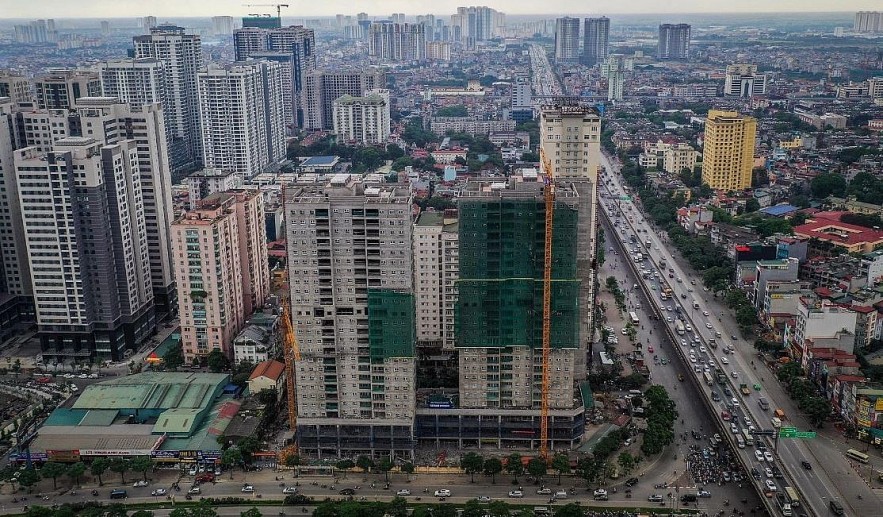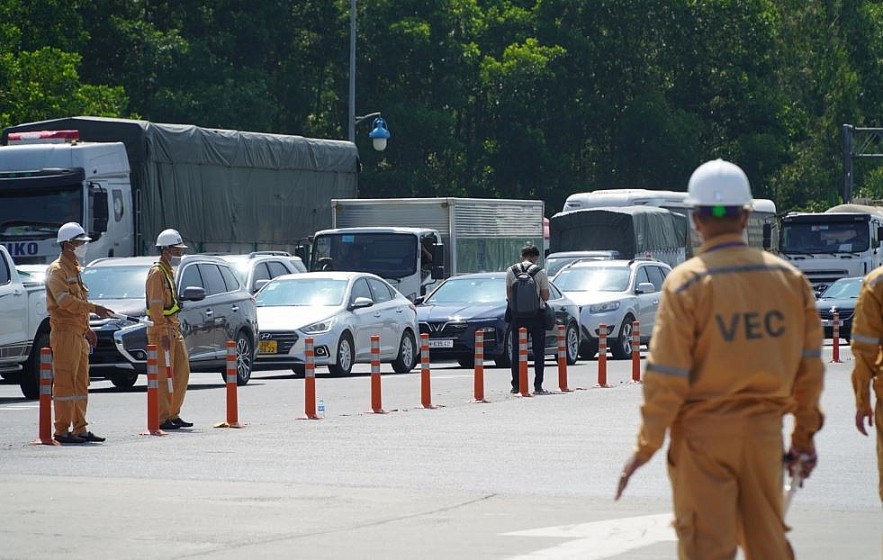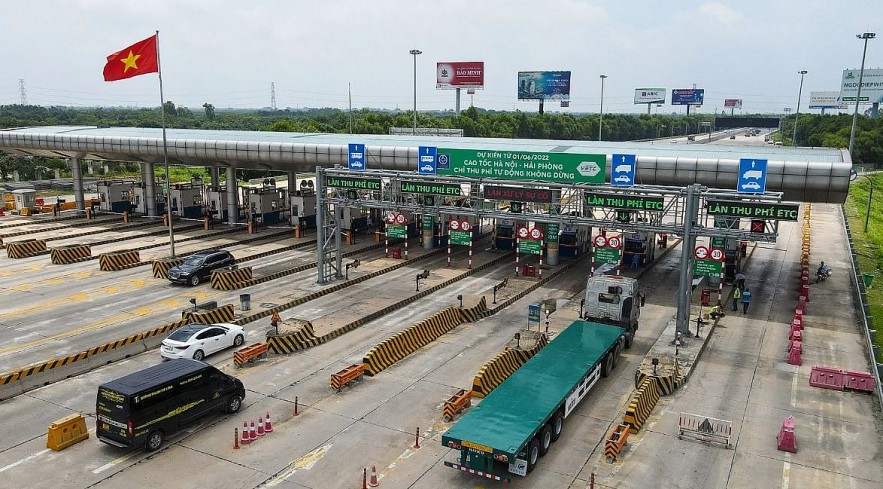|
Business Briefing Gold rate: VND 68 million per tael (selling) Export news: Vietnam records USD 4.7 billion trade surplus with UK over 12 months Investment news: Enterprises, workers in non-State, FDI sectors rise rapidly Weather Forecast The low-pressure area in the South China Sea is likely to develop into a tropical depression in August 8-9 |
Business Briefing
Gold rate
On today’s morning, the gold price fell to US$1,776.4 per ounce, down US$12.1 from the previous day’s dawn. Domestic continued to rise with an increase of VND 100,000 to VND 400,000 per tael in selling transation. With the adjustment, the price reached nearly VND 68 million per tael (selling).
SJC gold price was adjusted to increase by VND 200,000 per tael in both directions to reach VND 66.6 million per tael (buying) and VND 67.62 million per tael (selling).
 |
| Photo: Zing |
Export news: Vietnam records USD 4.7 billion trade surplus with UK over 12 months
Vietnam enjoyed a trade surplus of 3.9 billion pounds (over 4.7 billion USD) in the four quarters to the end of March 2022, up nearly 22% over the same period to 2021, reported the UK’s Department for International Trade. The data released early this week showed total trade in goods and services (exports plus imports) between the UK and Vietnam was 5.7 billion pounds, an increase of 15% year-on-year.
During the reviewed period, total UK exports to Vietnam amounted to 905 million pounds (an increase of 0.2%), of which export of goods accounted for 68.3% at 618 million pounds, up 3% year-on-year, while services were 287 million pounds, making up 31.7% and down 5.3% year-on-year. Major products shipped from the UK to Vietnam included pulp and waste paper (74.4 million pounds), medicinal and pharmaceutical products (71.3 million pounds), beverage (42.2 million pounds), metal ore and scrap (35.2 million pounds), and scientific instruments (31.6 million pounds).
On the other side, Vietnam’s shipments to the UK increased 18.3% to 4.8 billion pounds, 97.2% of which were goods, with only 2.8% services. The top five goods imported to the UK from Vietnam were telecoms & sound equipment (29.7%), clothing (381.8 million pounds), iron & steel (336.8 million pounds), footwear (334.8 million pounds), and furniture (329.9 million pounds).
Experts forecast the bilateral free trade agreement between the UK and Vietnam, which officially took effect on May 1, 2021, with a wide-range tariff elimination, has helped boost trade between the two markets. However, room for expansion is still large as Vietnam was the UK’s 36th largest trading partner, accounting for just 0.4% of total UK trade. Updated data on trade in goods showed the UK’s exports of goods to Vietnam decreased by 4.3% in the 12 months to May 2022 compared to the same period of the previous year. Meanwhile, UK imports of goods from Vietnam increased by 15.5% over the same period.
 |
| Photo: Zing |
Investment news: Enterprises, workers in non-State, FDI sectors rise rapidly
The number of enterprises and employees working in the non-State and FDI sectors increased rapidly, whereas that of the State sector fell markedly. This is one of the contents of a survey conducted by the General Statistics Office, which has just been announced in the Publication of the 2021 Economic Census.
Accordingly, by type of enterprise, the non-State enterprise sector concentrated the most enterprises and employees as of December 31, 2020, with 660,100 enterprises, accounting for 96.4% of the total number of enterprises nationwide. The sector attracted 8.6 million employees, accounting for 58.6% of the total number of employees.
The FDI enterprise sector has the fastest growth rate in the number of enterprises among the three industries. It accounts for an increasingly large share of the total number of jobs created in the enterprise sector. The number of FDI enterprises is 22,200 enterprises, accounting for 3.3% of the total number of enterprises. It attracted 5.1 million employees, accounting for 34.6%.
Due to the State’s policy of equitization and rearrangement, the State-owned enterprise sector continuously decreased during this period, the total number of State-owned enterprises was only 1,963 enterprises as of December 31, 2020, accounting for 0.3% of the total number of enterprises, a decrease of 26.3% compared to 2016. The enterprises attracted 1 million employees, accounting for 6.8% of the labor of the entire enterprise sector. The General Statistics Office pointed out that non-State enterprises have the same average labor size as small enterprises in terms of employees. In contrast, State enterprises and FDI enterprises have the same average labor size as large businesses.
In terms of the economic region, the number of businesses and workers is increasing in the Red River Delta and the Southeast region, where the two largest economic centers in the country are located, HCM City and Hanoi. The Southeast region and the Red River Delta region clearly show their role as the two largest economic centers in the country, always leading in the number of enterprises and employees.
 |
| Photo: Zing |
Accordingly, the Southeast region is the economic locomotive. This region has the most significant number of enterprises in the country, with 281,100 enterprises as of December 31, 2020, accounting for 41.1% of the total number of enterprises in the country. The region attracts 5.4 million employees, accounting for 36.6% of the total number of employees working in the enterprise. The Red River Delta region is the second largest economic center in the country with 216,800 enterprises, accounting for 31.7% of the total number of enterprises in the country, attracting 4.9 million employees, accounting for 33.2%.
Along with that, domestic and foreign investment capital into enterprises maintained a fast growth rate over the years, and the scale of enterprises was expanded mainly based on the development of capital factors instead of labor factors. The source of capital attracted to enterprises has grown rapidly over the years, with the total capital used for production and business of the entire enterprise as of December 31, 2020, reaching VNĐ48.7 quadrillion (US$2 trillion), a year-on-year growth of 12.3%.
In the 2016-20 period, the attracted capital reached an average of VND 38.4 quadrillion per year on average, with the average growth rate reaching 14.8% per year, an increase of 104.1% compared to the 2011-2015 period. The growth rate of capital is always higher than the growth rate of the number of employees, showing that the average labor size of enterprises tends to shrink, but the average size of the capital of enterprises tends to expand.
“This reflects businesses that expand their scale mainly based on capital growth instead of labor growth; at the same time, it shows that Vietnam is a potential market to attract investment capital, which is a premise to promote resources for in-depth economic growth”, said General Director of General Statistics Office Nguyen Thi Huong.
In addition, the capital structure among different types of enterprises changes in the direction of gradually increasing the proportion of capital sources of non-State enterprises and FDI enterprises and progressively reducing the proportion of capital sources of State enterprises. Non-State enterprises attract the most capital sources.
The leader of the General Statistics Office said that the Prime Minister carried out the economic census according to Decision No 307/QĐ-TTg dated February 27, 2020. This is one of three censuses conducted by the statistics authorities to help the Party and State get an overall economic picture of the country; serving the strategic consulting work of ministries, branches and localities; and grasping the current situation of the economy, and of each industry and locality in particular.
Weather Forecast
August 8-9: According to the National Center for Hydro-meteorological Forecasting, the low-pressure area in the South China Sea is likely to develop into a tropical depression. The sea area from Binh Thuan to Ca Mau, the middle and southern areas of the South China Sea (including Truong Sa archipelago) will have strong southwesterly winds of level 5, then increase to level 6.



